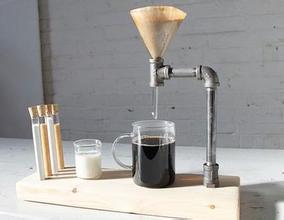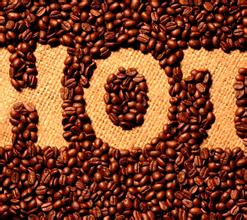Liberian caffeine content-caffeine content of a cup of coffee
Liberian caffeine content-caffeine content of a cup of coffee
Liberian species, scientific name Coffealiberica), West Africa is the origin of Liberian coffee, no matter high or low temperature, humid or dry and other environments, all have strong adaptability, but not resistant to leaf rust, flavor is worse than Arabica robusta species, scientific name coffee RobustaLinden, leaf rust resistant varieties found in Congo, Africa, have stronger resistance than Arabica species. In fact, it was a mutant of the Congo species (scientific name Coffeacanephora). The name of the Robusta species has become popular, and it is regarded as the same species as the Congolese species. This has a unique aroma (called "Luobu smell", which some people think is moldy) and bitter, and is generally used in industrial coffee, such as instant coffee, bottled coffee, liquid coffee, or in a small amount in blended coffee. Caffeine content of about 3.2% of the acabica species, scientific name coffee Arabica, origin is Ethiopia's Abyssinia plateau (now Ethiopia plateau), initially mainly used as medicine to eat, the 13th century to develop the habit of baking and drinking, the 16th century through the Arab region in Europe, and then become a common favorite drink all over the world. The resistance to nature's dryness, frost, diseases and insect pests is too low, especially the natural enemy of coffee-leaf rust. Arabica is mainly produced in South America, Central America, Africa (East African countries) and Asia (including parts of Yemen, India and Papua New Guinea). Caffeine content about 1.5% Coffee has always been thought to have certain effects, such as strengthening the stomach, waking the brain, stopping bleeding, dissipating heat, strengthening the body and so on. Current studies have found that there are about 103 species of coffee, including Arabica and Robusta (with Liberian species, these three are the "three major native species, traded only within West African countries," or planted for research. ). The Canifera species is commonly known as the Robusta species. In fact, the Robusta species is only a branch of the Canifera species, because it is widely recognized, so the Robusta species has gradually become synonymous with the Canifera species.
1. Raw coffee beans
Coffee fruit has been refined enough to be used as a commodity circulation of coffee seeds.
two。 Lao Dou (old crop)
Raw beans that have been harvested for more than a year and have less water content. Those listed in the same year are "new beans", and those listed the following year are "old beans".
3. Defective bean
Refers to bad coffee beans mixed like raw beans. Including dead beans, unripe beans, shell beans and so on. Failure to pick out defective beans before and after baking will destroy the taste of coffee.
4. Flat bean (Flat Bean)
In the general coffee fruit, there will be two coffee seeds growing relative to each other, and its contact surface is flat, so it is called "flat bean".
5. Round bean (Pea-berry)
When the coffee fruit is not fully developed, there is only one coffee seed in the fruit, which is round in shape, so it is called round bean.

Important Notice :
前街咖啡 FrontStreet Coffee has moved to new addredd:
FrontStreet Coffee Address: 315,Donghua East Road,GuangZhou
Tel:020 38364473
- Prev

Italian coffee machine structure removal apron replacement-household Italian coffee machine recommendation
Italian coffee machine head structure removal apron replacement-domestic Italian coffee machine recommended from the internal diagram you can see that the boiler part of the Aurora is very large, the internal structure has been adjusted to remove the automatic water filling system. Instead of adding a temperature probe at the top of the boiler, a vacuum valve has been added, which makes preheating simple and fast. The heat exchange pipeline can be seen below, and the direction is very clear.
- Next

Espresso extraction time-the difference between American and Italian concentrate
Espresso extraction time-the difference between American and Italian concentrate in what we often say about coffee machine hardware, the most often mentioned is the size of the boiler and pump (pump). In fact, there are a lot of things to pay attention to in the coffee machine. The design of different pipes of materials will affect the effect of a cup of coffee, which is why responsible manufacturers use copper or stainless steel as the main material of the coffee machine. First,
Related
- Beginners will see the "Coffee pull flower" guide!
- What is the difference between ice blog purified milk and ordinary milk coffee?
- Why is the Philippines the largest producer of crops in Liberia?
- For coffee extraction, should the fine powder be retained?
- How does extracted espresso fill pressed powder? How much strength does it take to press the powder?
- How to make jasmine cold extract coffee? Is the jasmine + latte good?
- Will this little toy really make the coffee taste better? How does Lily Drip affect coffee extraction?
- Will the action of slapping the filter cup also affect coffee extraction?
- What's the difference between powder-to-water ratio and powder-to-liquid ratio?
- What is the Ethiopian local species? What does it have to do with Heirloom native species?

